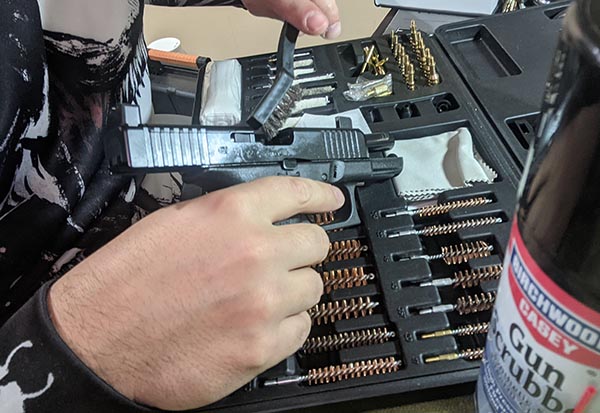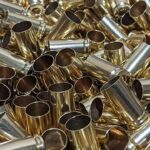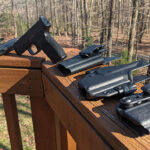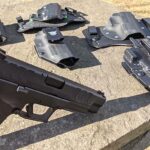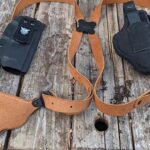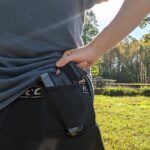For many, myself included, taking apart a gun to clean it is therapeutic. However, many would prefer to skip this step altogether let alone break down their gun into pieces to clean it. But, can you clean a gun without taking it apart? The short answer is no, cleaning a gun without taking it apart is ill advised. Manufacturers provide instructions on field stripping (taking your gun apart) as a means to maintain optimal working condition.
Table of Contents
Why Take Apart Your Gun For Cleaning?
You may be rolling your eyes at my assertion that you shouldn’t clean your gun without taking it apart. However, I’ll try to put this into perspective. Can you drive your car by topping off your oil rather than change it? Absolutely, but eventually your lack of care will catch up to you and leave you stranded on the side of the road.
A firearm is no different. Superficial cleaning is better than not cleaning at all. However, taking apart your gun allows you to ensure that all of the pieces are protected, safe, and in good working condition. Ultimately, this leads to a safer experience when shooting as well as reliability if you ever need to use your gun in self defense.
Whether you own a revolver, an automatic, a rifle, or a shotgun — every firearm is a mass of moving parts. If any of these parts cease to move accordingly, you can expect malfunctions or outright failure. Therefore, cleaning a gun without taking it apart is eventually going to lead to problems.
Field Stripping Your Gun
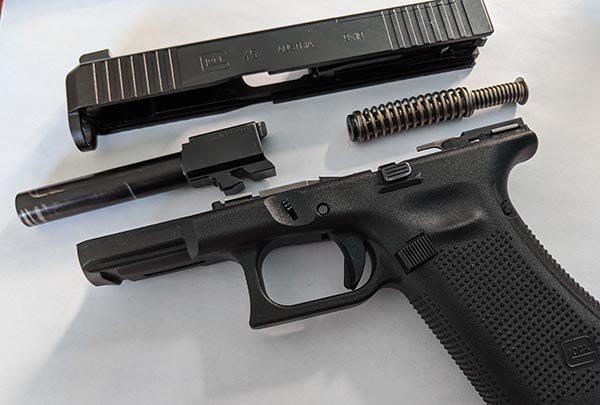
Field stripping a gun is the recommended method of cleaning a firearm by the manufacturer and can generally be done without any special tools. However, occasionally they will provide you a specialized tool meant for this purpose. My PK380 is one such exception.
When you field strip a gun, you’re breaking it apart into the larger components. When you take a gun apart this way, you access many common areas where carbon deposits and other nastiness can congregate. Usually, a good cleaning of these pieces can extend the life of your firearm and is sufficient for light to moderately used guns.
However, for heavily used guns field stripping may be inadequate to ensure the gun stays in working condition. Therefore, you’ll need to perform a deep clean.
What Does “Deep Cleaning” A Gun Mean?
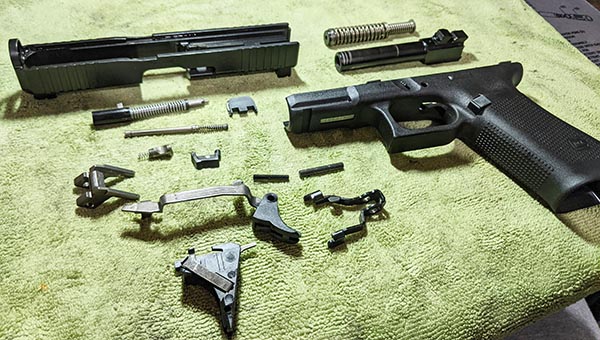
Same Glock taken apart for deep cleaning
When you field strip a gun, you break it down into smaller components. However, a deep clean means taking apart a firearm down to the smallest components. Usually, a deep clean will result in various springs, pins, and bars sitting on your workbench. Attempting to catalog each component for each gun would be futile. Each gun is unique and thus requires its own set of instructions.
However, a deep clean allows you to clean parts otherwise concealed within larger components. Additionally, the channels and crevices where these parts move and reside can be cleaned. Simultaneously, you can inspect the condition of each piece while the gun is apart.
Different Solvents For Different Needs
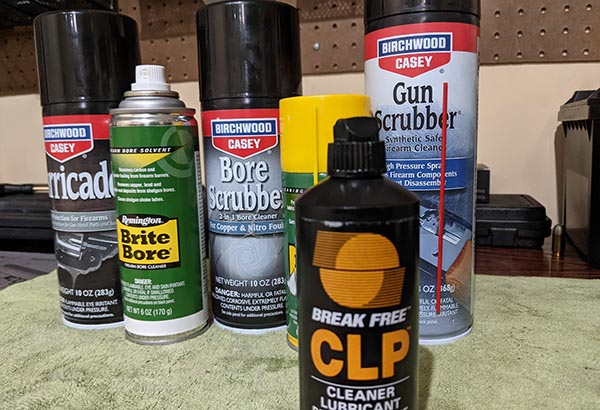
If a gun was meant to be cleaned without taking it apart, then why are there so many different solvents? A variety of different brands exist for gun cleaning solvents and within these brands there are usually several different cleaners with different purposes.
Therefore, it’s important to take your gun apart for cleaning to use the appropriate solvent on the appropriate part. Bore cleaners aren’t meant to be used on the frame. Consequently, solvents used for cleaning the slide and other components aren’t necessarily meant for the bore.
Admittedly, getting a small amount of one cleaner on a part it wasn’t intended for isn’t usually going to be detrimental. Additionally there are solvents like CLP that are the “all-in-one” type solution that’s meant to do it all. Don’t get me wrong it’s a fantastic product, but for a deep clean I prefer targeted solutions.
Consequences Of Improper Cleaning
Guns are both incredibly simple and utterly complex machines. Consequently, the margins for each moving part are minimal. Failure to clean buildup can result in an erosion of those small margins that are essential to a properly functioning firearm.
When you shoot a round, smokeless powder is being burned and produces gases that propel the projectile. As a result of this reaction, carbon and other material coat the barrel and other parts of your firearm.
Over time, the particulates will build up. Many of these substances are caustic to your firearm. Additionally, superficial cleaning introduces oils or other agents to the mix. These can mix with the fouling and bind together. Ultimately leading to bigger and tougher buildup.
Parting Shots
I’m sure there are many enthusiasts who insist that you don’t need to take your gun apart to clean it. However, I challenge you to perform your “cleaning” method without taking the gun apart. Afterwards, field strip or deep clean your firearm. I guarantee that you will go through many cleaning patches before your firearm is truly clean. If you’ve found this article helpful please like, share, or comment.
